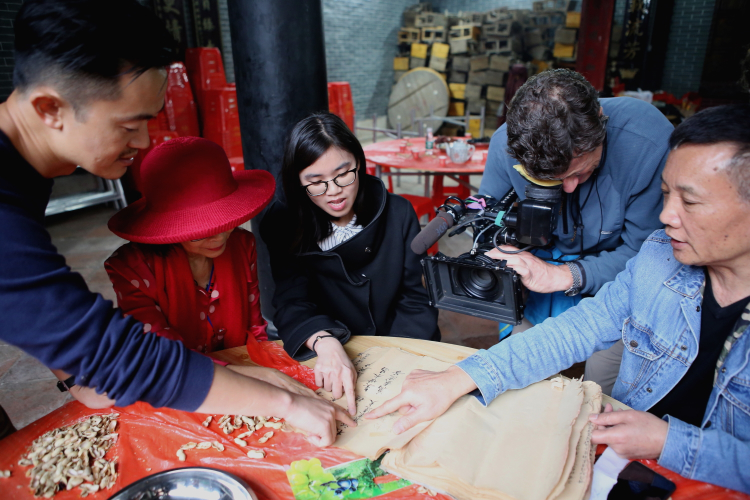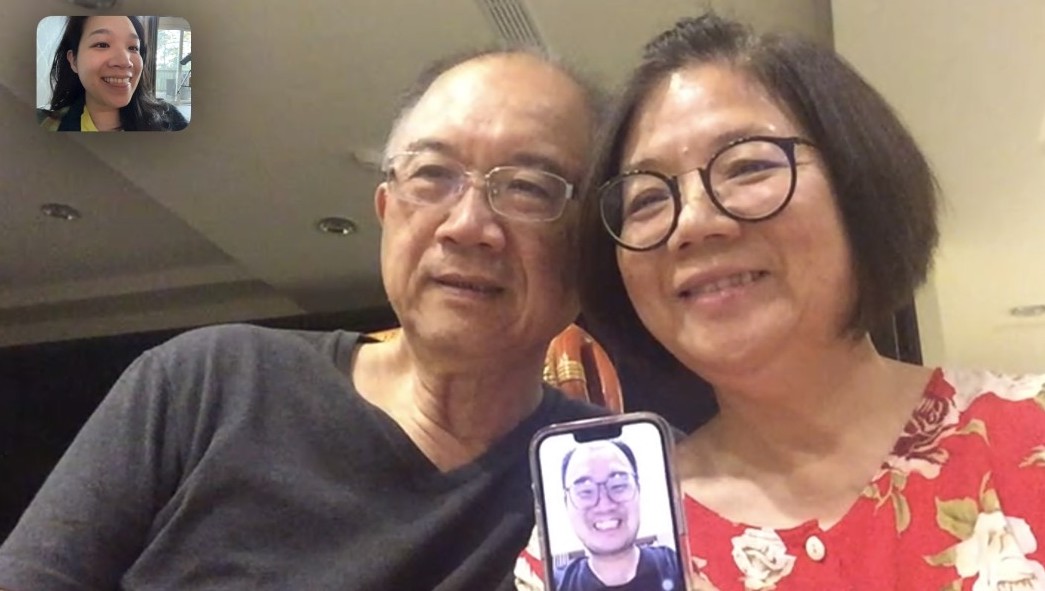It all began with a puzzling picture above the fireplace.
Growing up in San Francisco, David Hom never gave much thought to his ancestry, let alone the wall decor in his house. His parents, who immigrated to the US in the 1940s, said nothing of their lives back in China. When they passed away, the only clues they left behind were a mysterious frame above the fireplace… and handwritten notes on old photos that neither David nor his wife Doreen could read in Chinese.
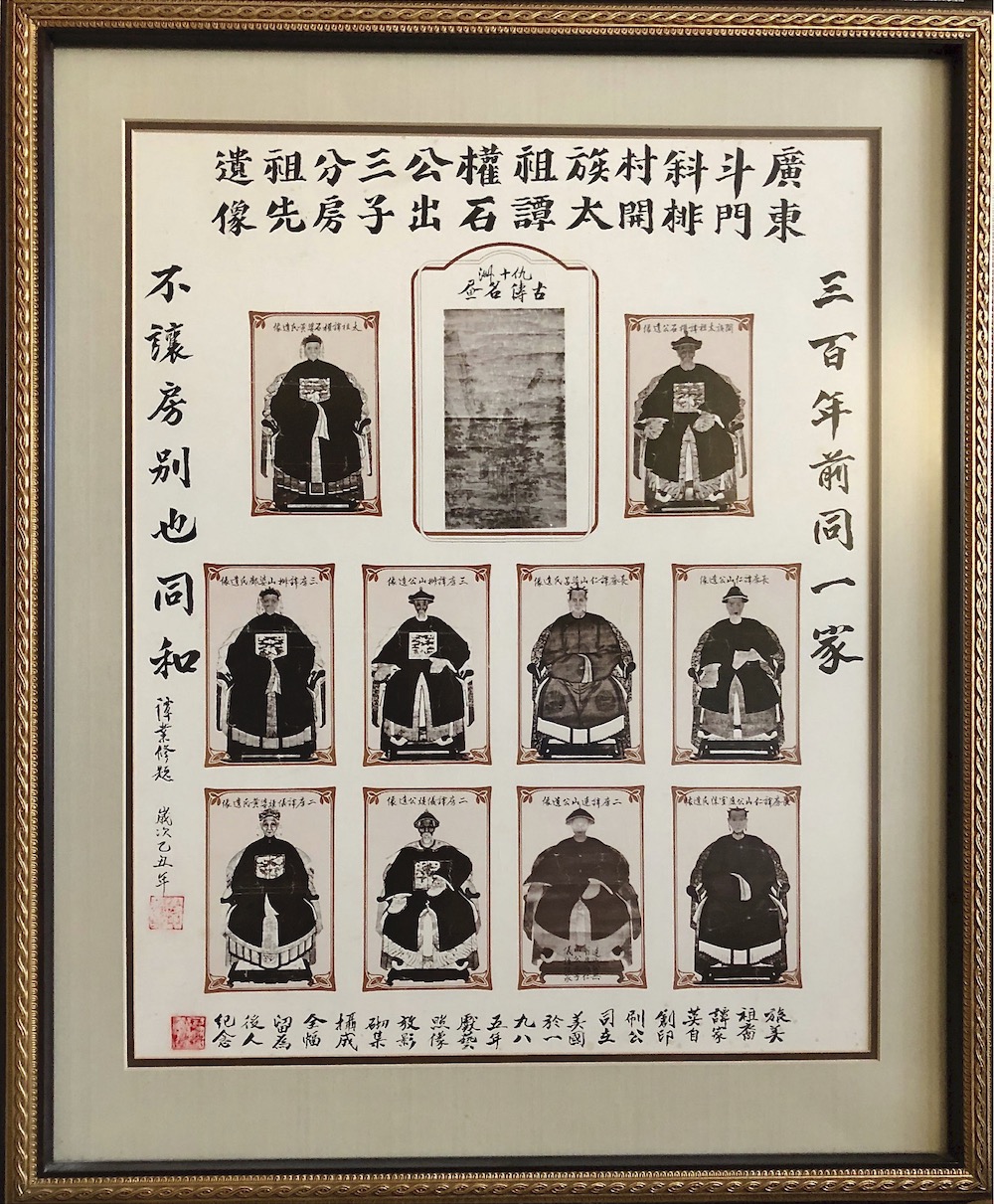
Then one day, their son Darrick asked if they had a zupu, a traditional Chinese family history book. David had no idea, only the pictures — and within two months, with a friend’s help, Darrick had all the Chinese captions translated into English. What was revealed surprised them all.
In careful detail, David’s parents had mapped a clear trail of names and addresses pointing back to the Hom ancestral village of Paishan. Among the photos was evidence as well of a “paper family” that sponsored David’s father to immigrate to the US as a “paper son.” What’s more, the fireplace picture seemed to be a depiction of the very first Hom ancestors, framed with a simple line of poetry: 300 years together as one family.
“That’s when we realized, ‘Wow, there’s a story here,’” recalls David. “Before, the pictures had no meaning. We didn’t know who we were looking at. Now, we could hear the echoes from long ago.”
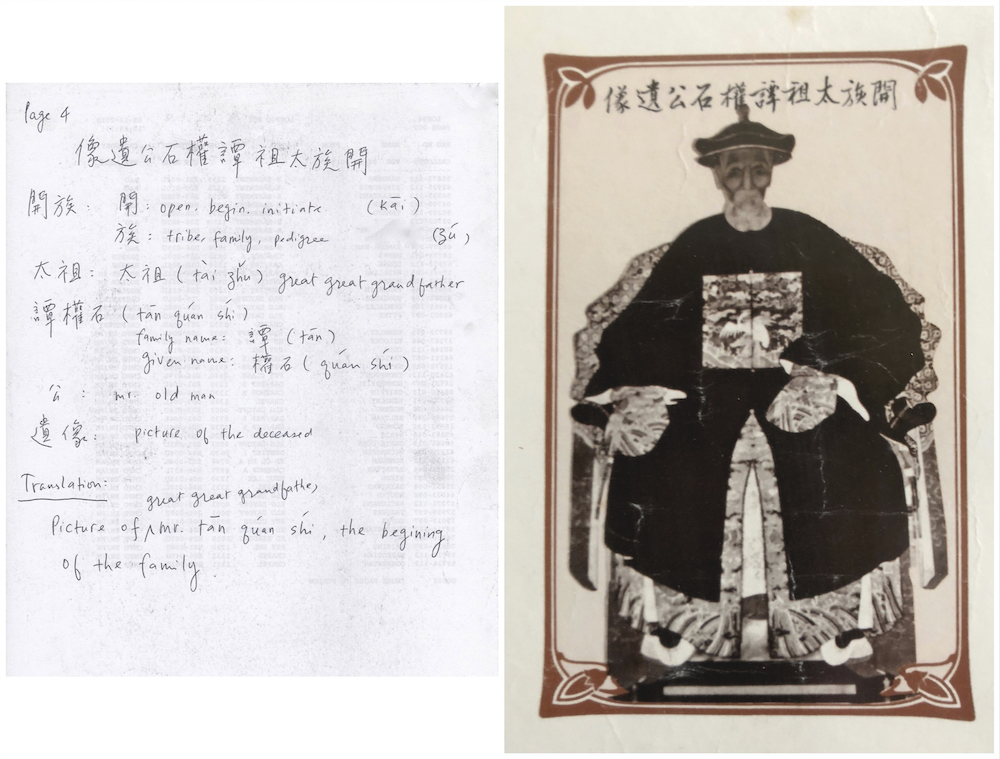
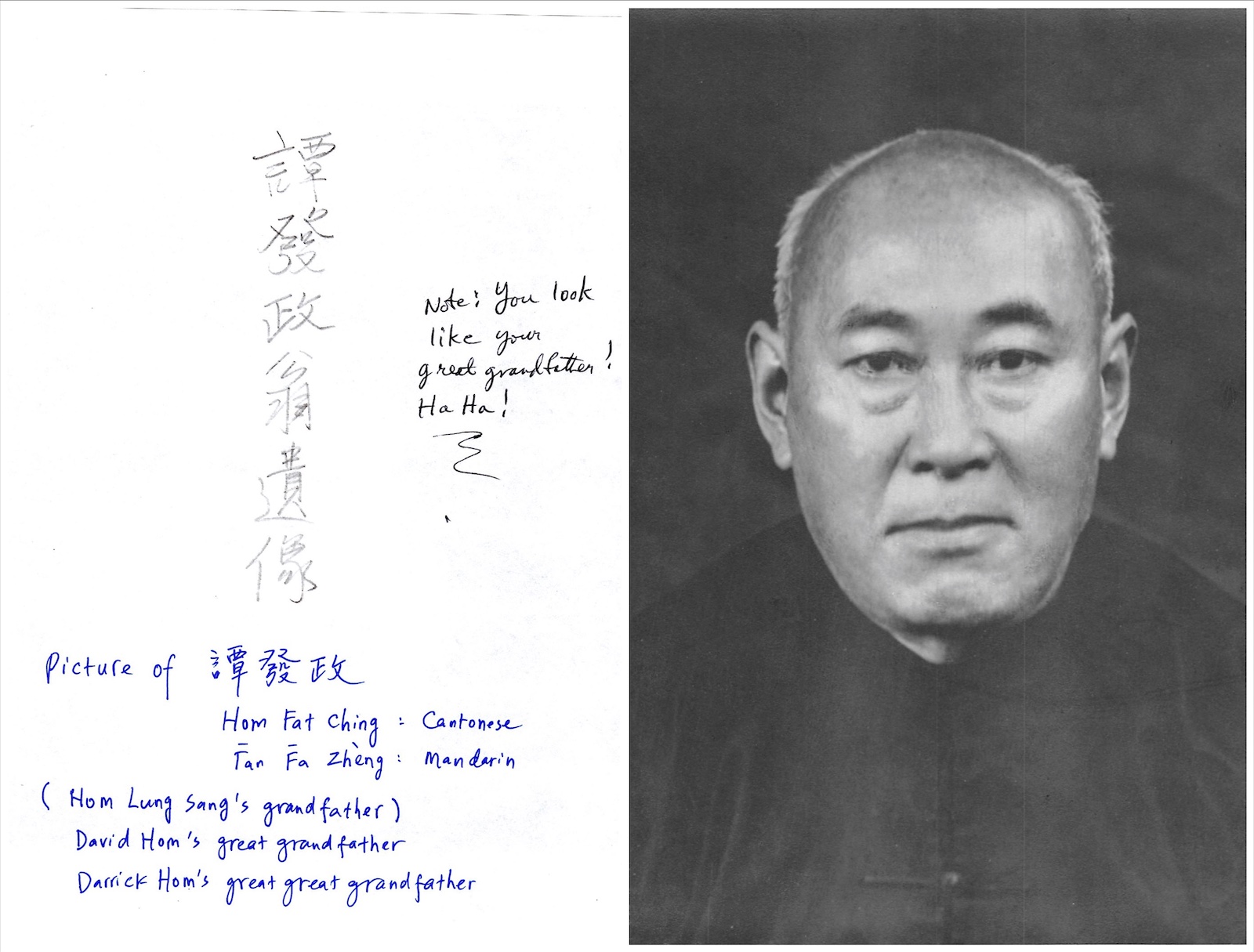
Flush with clues, David and Doreen set out to put the puzzle pieces together. What began as an iPhoto album soon grew into a 97-page digital storybook of ancestral photos and family trees — their own Hom zupu. They left no stone unturned, even unearthing 150 pages of immigration records documenting the tough interrogation David’s father faced at the US border.
Yet as their family tree grew, David found himself with more and more questions. What happened to his father’s siblings after he left for the US? Was his grandfather buried in the US or China? Could Paishan hold “missing links” to the 300-year-old ancestors on his fireplace? The family photos had brought him this far; now, it was time to put boots on the ground.
David sent his zupu-in-progress to My China Roots, asking our researchers to uncover any traces of Hom relatives and family history remaining in Paishan. After two months of outreach to local officials and clan association leaders, we hit jackpot. Not only has an original clan zupu been preserved in Paishan, David still has two first cousins living in China after all this time. We found Hom Shing Yong, the 83-year-old son of his father’s missing brother, alive and well in Paishan, as well as Hom Chung Peng, Shing Yong’s 85-year-old sister in Macau.
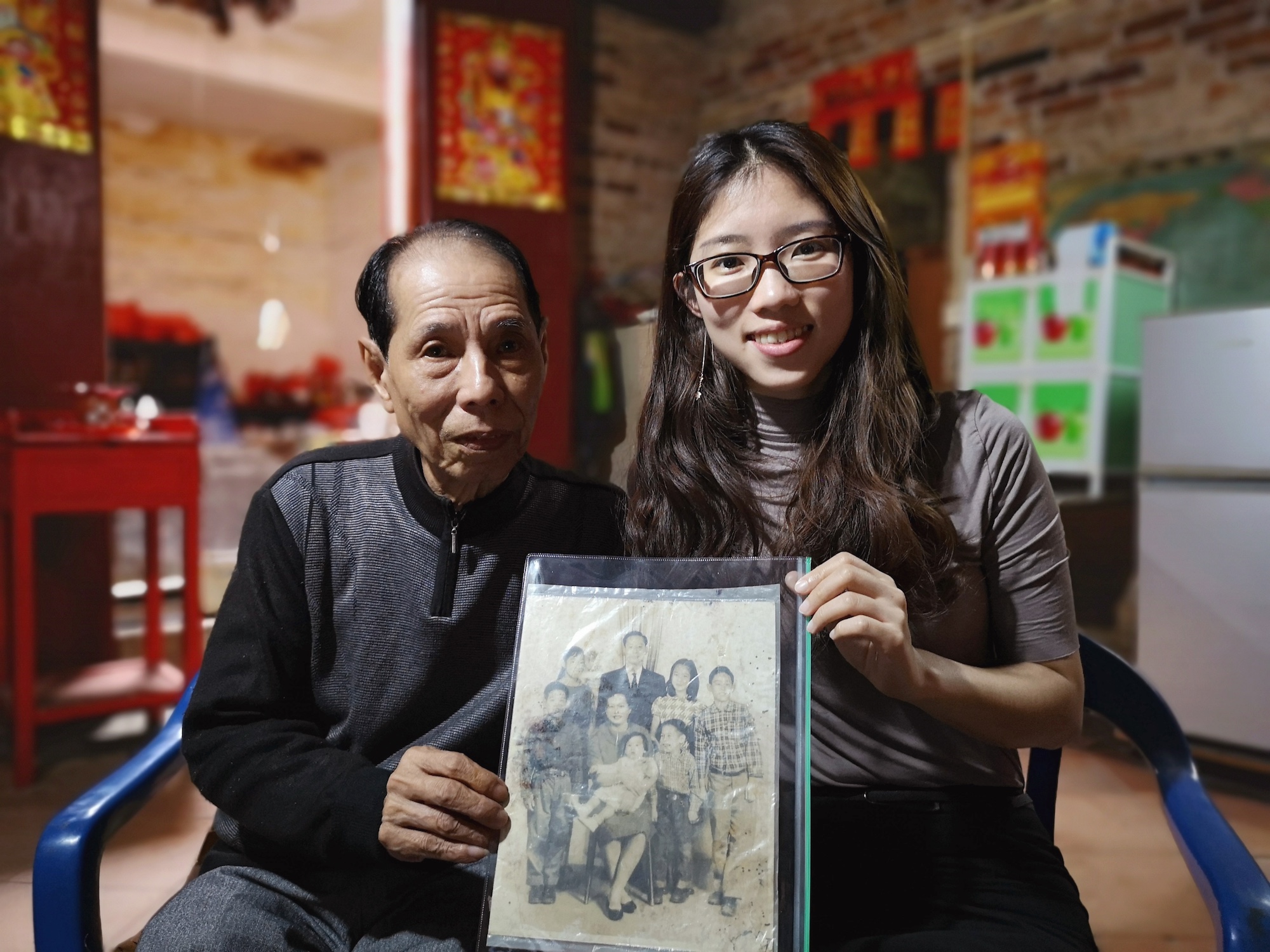
Thrilled at the news, David and Doreen immediately made travel plans to reunite with their newfound family in Macau. In preparation, they downloaded WeChat, and they weren’t alone. Like many elderly villagers, Chung Peng had not kept up with China’s digital revolution. Yet eager to connect, she too got on WeChat, with a bit of help from younger relatives.
“We don’t have any excuses anymore,” says David. “When we were young, we said, ‘I can’t speak Chinese, so I ain’t gonna talk to them.’ The older generation said, ‘They can’t speak Chinese, so we don’t want to speak to them.’ But now you can actually communicate, if you truly want to.”
Upon their arrival in Macau, David and Doreen were amazed at the large crowd gathered to welcome them and their sons. After half a generation of separation, everyone was overjoyed to be reconnected at last.
“Chung Peng called out, “FINALLY, WE MEET!” like she had been waiting a long time for us,” Doreen recalls, laughing. “She felt just like my mother, like real close family.”
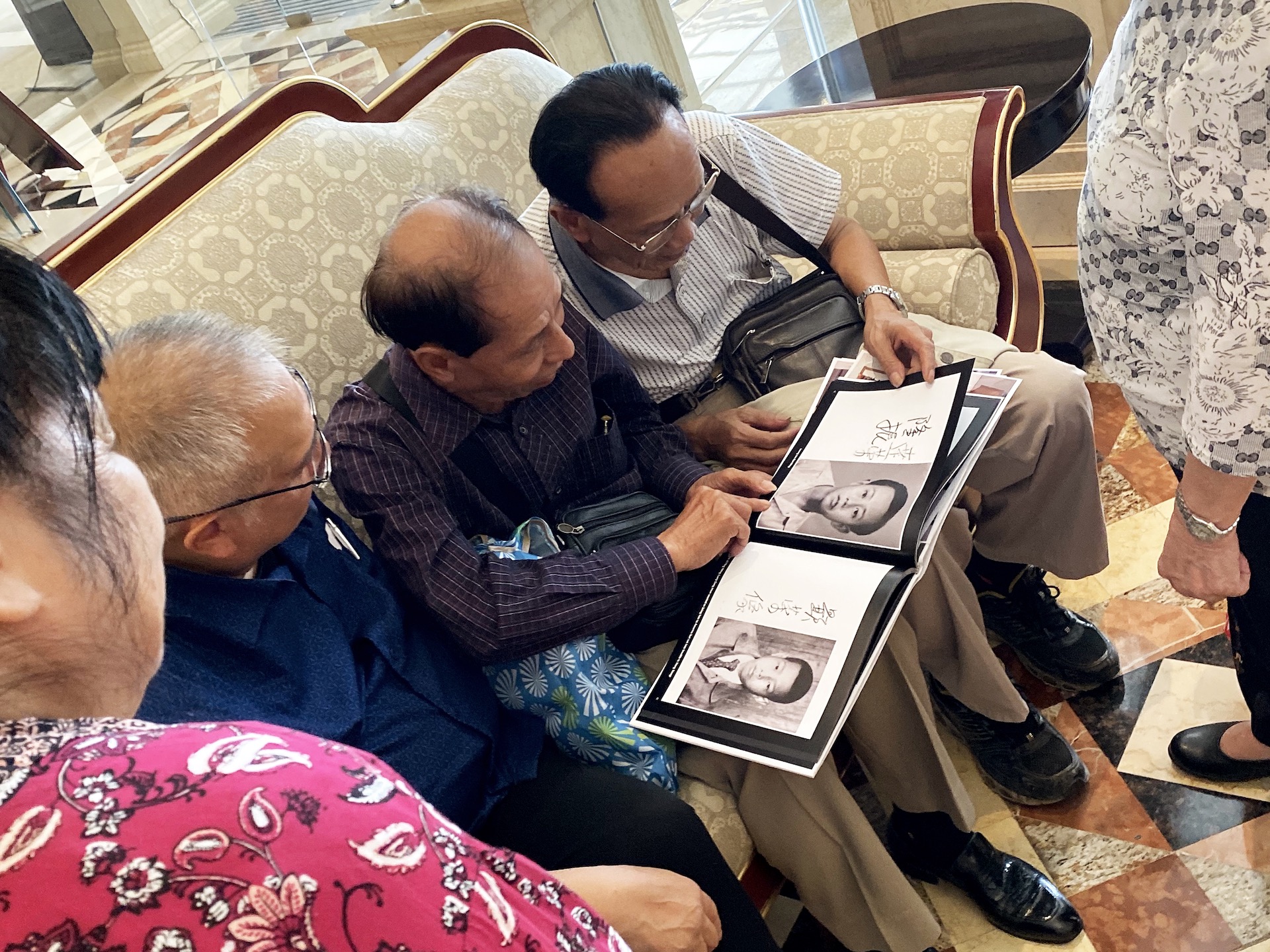
Given the language barrier, we encouraged David and Doreen to print out copies of their storybook ahead of time. Their photos would be a great way to spark stories and create common ground as a family. Sure enough, the moment the cousins saw their mutual ancestors, they lost no time filling in the gaps that had stumped David and Doreen.
“According to Shing Yong, my father’s brother ran away to Vietnam,” says David. “He was a doctor and never came back, so Shing Yong never got to meet his father.” Incidentally, Shing Yong had also attempted to enter the US with the same paper family who sponsored David’s father. However, his application was rejected, so his life remained in Paishan.
“Chung Peng told us what happened to David’s father’s sister too,” shares Doreen. “She married an official who beat her to death. It’s tragic, but knowing helps us gain some closure. We could see how both sides in America and China were going through a lot at the same time.”
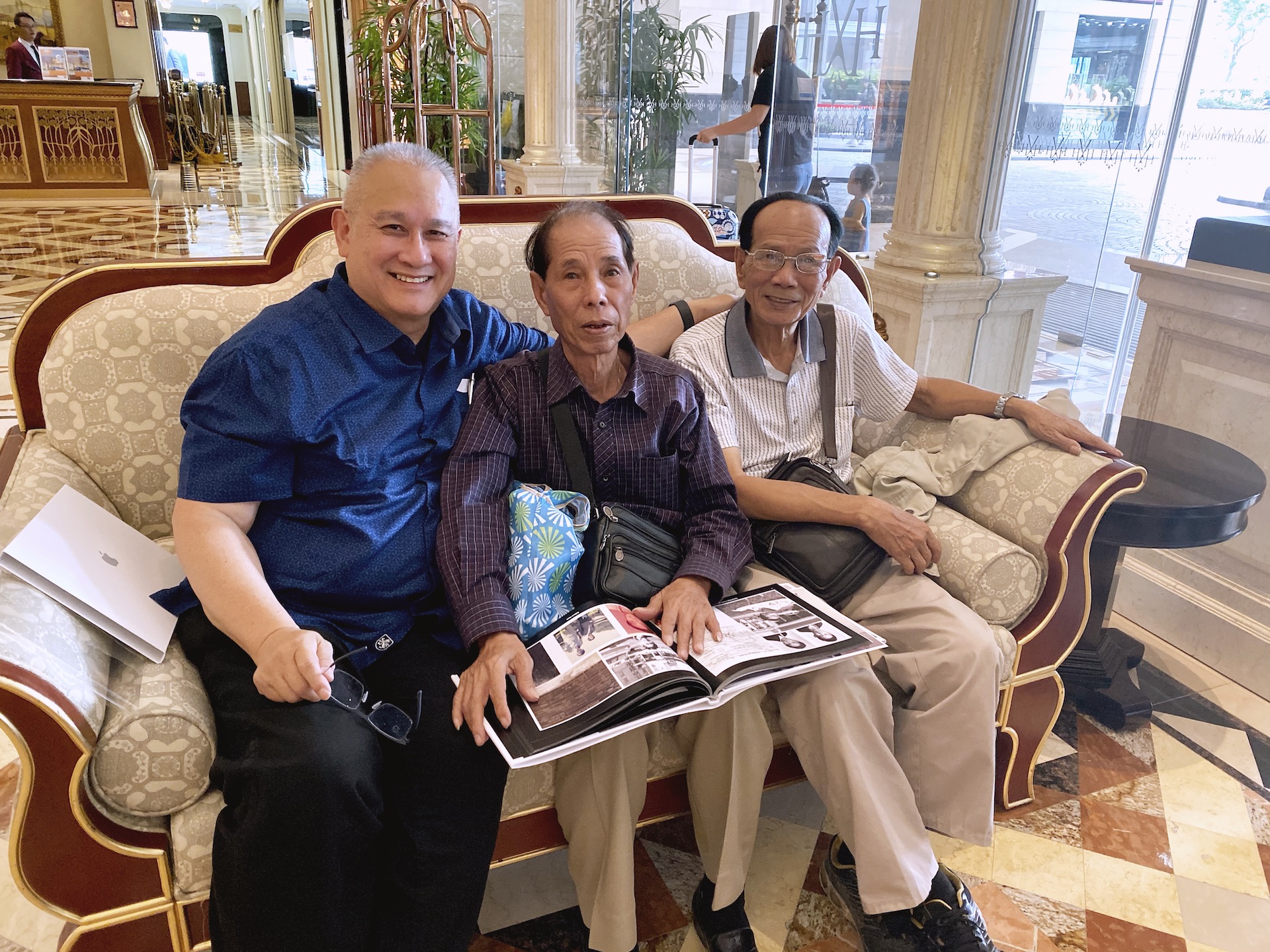
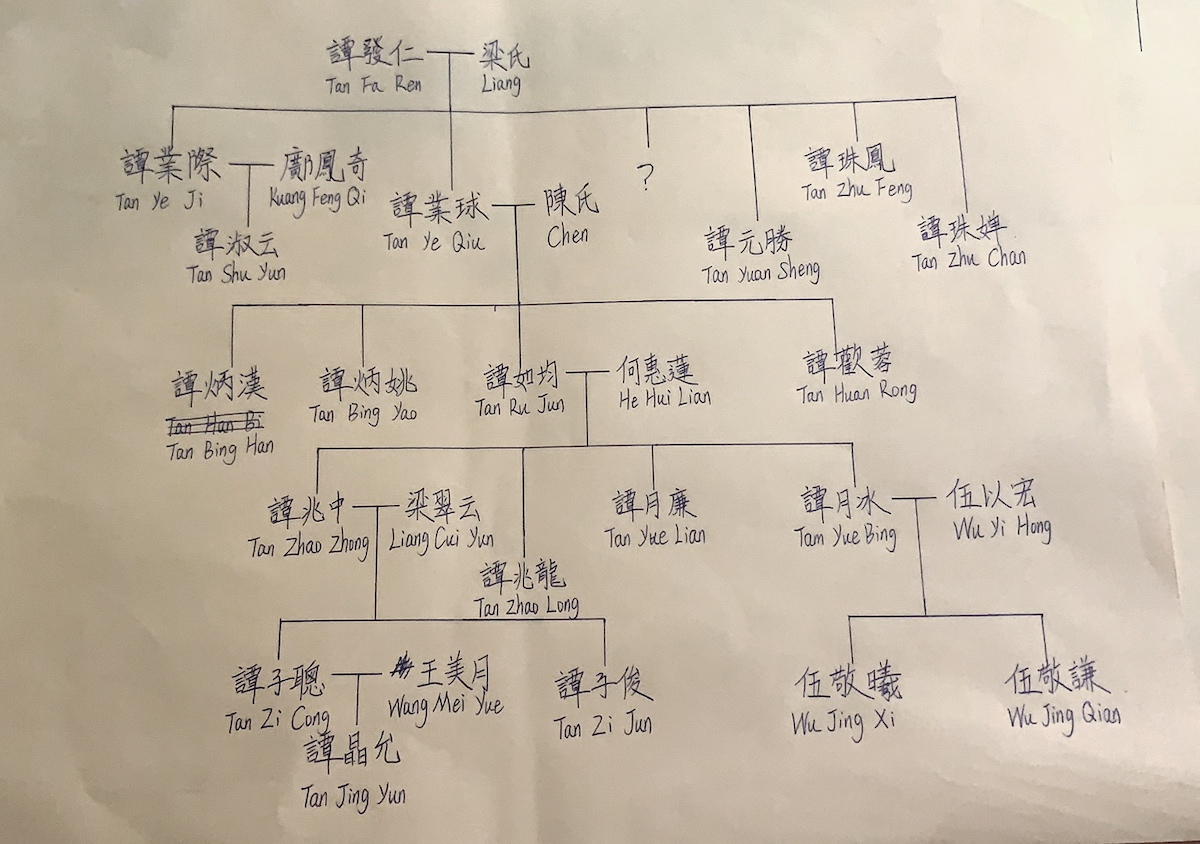
To David’s delight, the extended family was eager to share their family trees with him. Sadly, their village zupu had stopped being updated a few generations before the time of David’s great-grandfather. As fate would have it, his homemade storybook would be their “missing link” to reconnect their roots as well. Elated, they wrote down new branches of names for David to add to their newfound Hom family history book.
“One uncle admitted he didn’t realize how important the photos and family trees were,” says David. “Now that he can look back and remember everyone, he said he’ll cherish our book because it brought us all so close together.”
From memory lane in Macau, the reunited cousins returned to Paishan, where their ancestral graves and family house still stood. Built over a century ago with their great-grandfather’s hard-earned funds from the U.S, the house was seized after Communist reforms branded him as a landowning capitalist. Today, it has been returned and well-preserved as the finest house in the village, still housing the original wedding bed that David’s parents shared before starting their new life abroad. With such an inheritance, it’s no surprise that David took over 6000 photos on the trip!
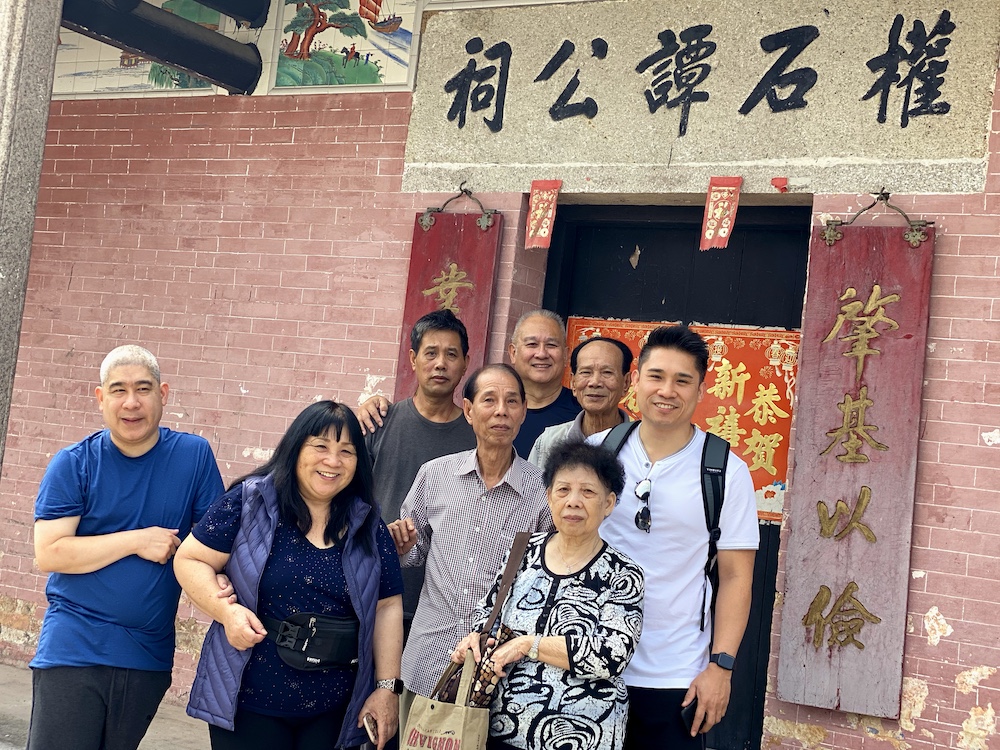
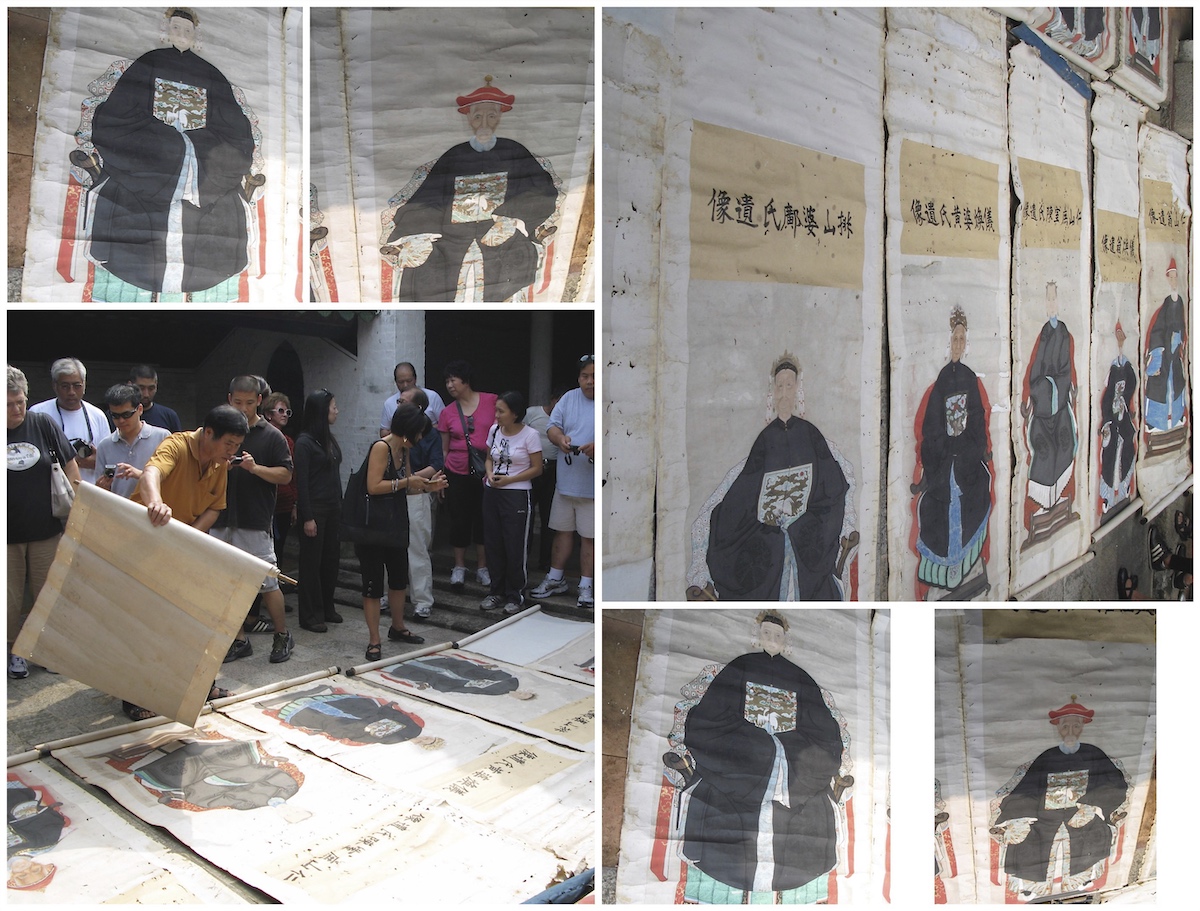
Finally, their homecoming tour came to its last stop: The Tan Quanshi ancestral hall, honoring none other than the first ancestors framed above David’s fireplace in San Francisco. Here were enshrined the splendid, life-size scroll paintings of Paishan’s founding family, the original Homs who started it all. After 300 years, David‘s roots had come full circle.
“We had nothing to go on but his parents’ pictures,” recalls Doreen. “Nothing! But it came out to a family reunion we never got to have in their lifetimes. Thank you MCR for helping us get together. We couldn’t have done it without you.”
Now regularly in touch with their family in China, David is grateful to share this journey with his children. “I did this research mainly for the younger generation. Maybe in another twenty years, we’ll be gone too… but my sons will know where they came from.”
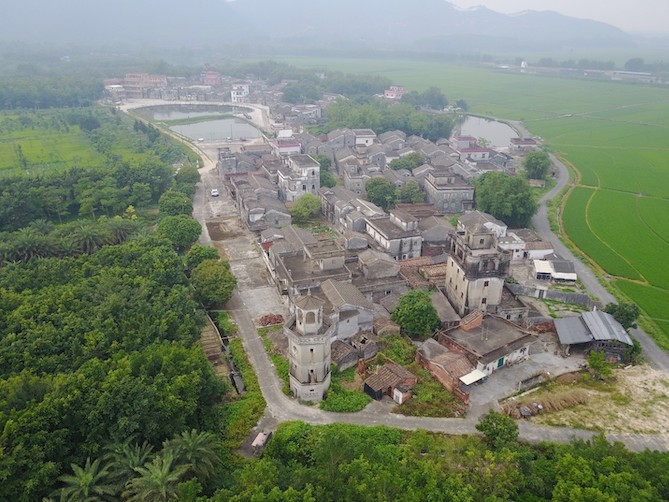
Find your ancestral village and connect with Chinese relatives!
If you are interested in finding your ancestral village and connecting with relatives in China, we would love to be of assistance. Our global team of researchers has helped hundreds of families discover their Chinese roots. Learn more about our services or go ahead and get in touch!
With the global pandemic, My China Roots is offering virtual tours packaged with our research trips to your ancestral village. Check out a demo here!


